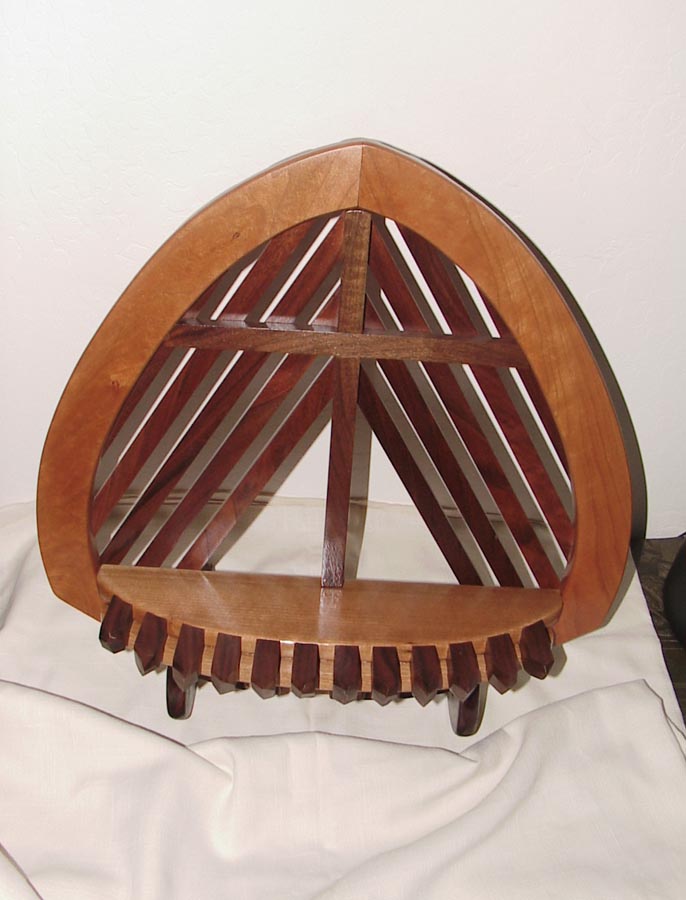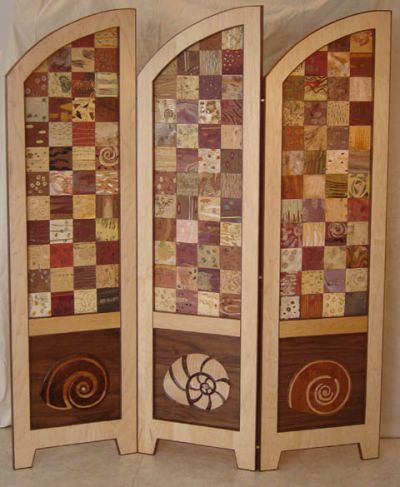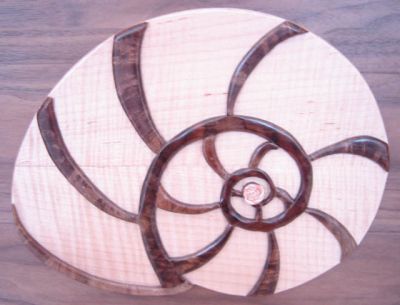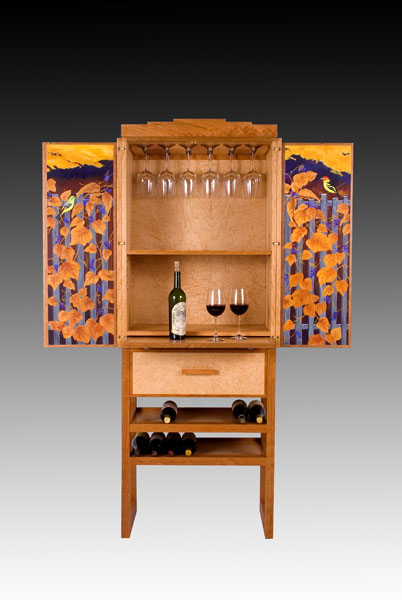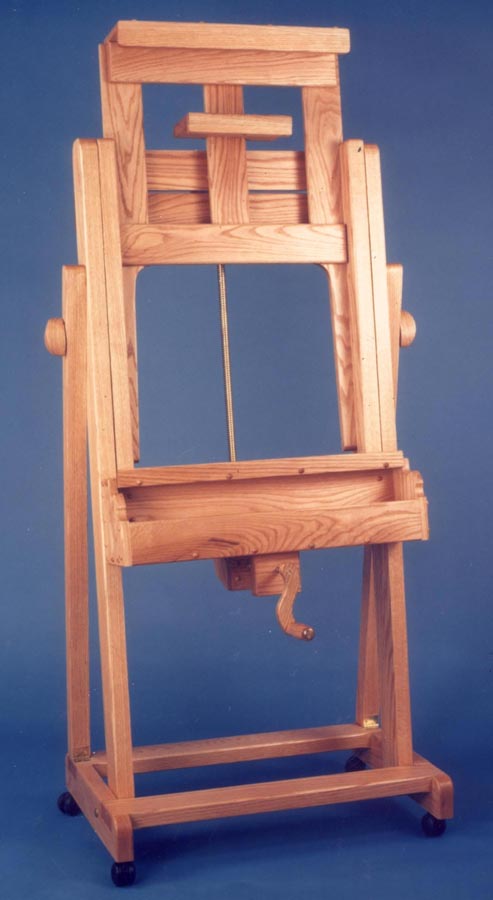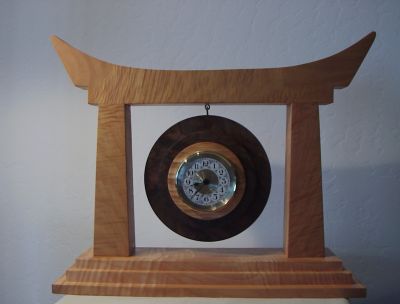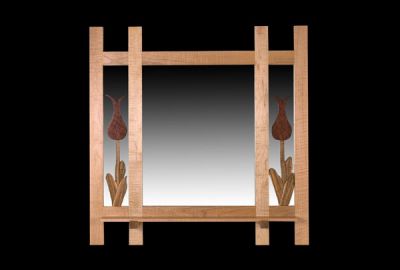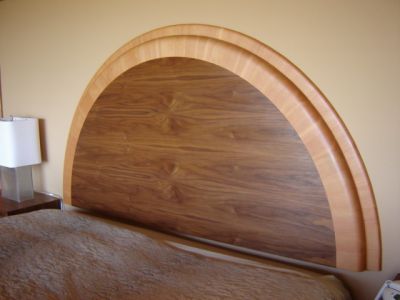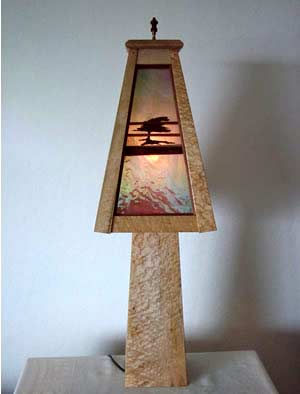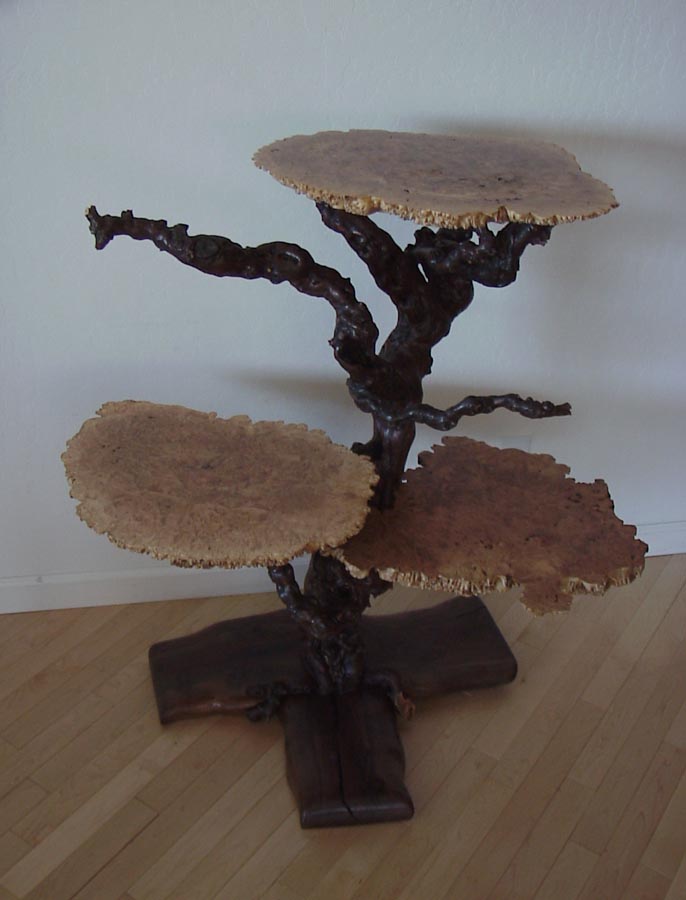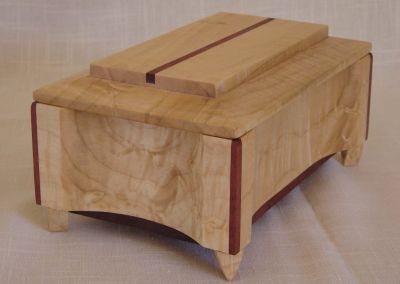
For Barry Semegran, it all started with bees; at least, after college. “I went to [the University of California at] San Diego to study science, but the college demanded that I take humanities as well. That opened things up for me, and I wound up studying ancient Greek philosophy. I transferred to UC Santa Barbara for their philosophy department, and did graduate work at Emory University in Atlanta. After several years, I left graduate school.
“At the time, in the early 70s, my wife had a job at Yerkes Primate Center, and I decided to get a couple of hives and raise bees. Being from California and New York City did not endear me to the locals, but beekeeping did. However, after looking at the hives, I concluded that I could build better ones, so I did. By 1973, I was selling lock corner cypress hives via mail order to other beekeepers. Eventually, hobby beekeeping started to wane, and I started making other things, including furniture. I even started a line of furniture based on beehives, which never took off.
“We moved back to California in 1988 and settled in Mendocino County. I decided to go into furniture making rather than beekeeping. This is a remote area with few customers and a lot of woodworkers. Because of that, I had to do basically any work that came along; repair, building garage cabinets or anything else. What I learned about the craft came from woodworking books and magazines.
“Having pushed thousands of board feet of lumber through a saw while making and selling beehives, I was comfortable with wood and tools and was not afraid of tackling large jobs. When people would ask, “Can you make such and such?” I would say yes. To this day, about half my work is still on commission.
“At present, I am making kitchen cabinets out of old growth cypress recovered from a swamp. It’s both a reminder of and a far cry from the 10 cent per board foot second growth cypress I used to buy to make beehives. This is more than $22 per board foot. Seeing how life circles back on itself like this is quite interesting.
“In the late ’90s, a local nonprofit art gallery and organization approached me about doing a two-person show with a watercolor artist. I got the center of the room, and she got the walls. I sold more than half the pieces on exhibit, and did more shows after that.
“That gave me the idea to start collaborating with other artists. Polywood Waves was my first collaborative piece, done with artist Sarah Waldron. I’ve always liked her work and thought it would be interesting to get her art off the wall and onto furniture. I built a three-segment screen ornamented with intarsia overlays in the bottom panel of each segment. They incorporate the theme of the Fibonacci sequence proportions seen in nature in things such as nautilus shells. Above that are 35 polymer clay tiles in each panel forming a mosaic with an aquatic theme tying in to the nautilus design. It did not sell at the gallery show, but it did sell about eight months later, and currently resides in Paris, France.
“Wine Cabinet, another collaborative project which I did with artist Adelle Platt, was made for a pending show. I looked at the gallery schedule and noticed she had the August slot, which is a prime one. I found her work interesting, so I called her and asked if she wanted to share the show with me. She said yes, and we decided to also do one wine cabinet together. I designed the cabinet with Adelle adding her suggestions, then built it, and she painted it. It’s still available.
“Not all my pieces are one-off furniture. The Paragon Easel, which was made for Fredrix Canvas Company, was done as a multiple. The original was made by an old Italian craftsman for Norman Rockwell and sold through Fredrix. I met the owner of Fredrix, and he said they were interested in making more. I looked at a mockup of the original, made a few changes, and over the years sold about 40 of them. They called it the Barclay Easel; Paragon is my name for it. I still sell them, though not to Fredrix.”
I noticed a rather eclectic style mix in Barry’s work, so I asked him where his design ideas came from. “The idea for Suspended in Time,” he explained, “which is actually a clock suspended in a stand, came from a gong I saw in a Zen garden. Two Lips Reflecting is one of my mirrors, and its design origin is fairly obvious. Because they are so practical, mirrors tend to sell well. This one was for the Art in the Redwoods festival, and sold at the show.”
“Sometimes the location of a piece helps design it. The ‘Sunburst Headboard’ actually sits in a room across from the setting sun that comes through a window. ‘Lighthouse Light,’ clearly inspired by nature, uses wood overlays on a stained glass panel to add shadow features to the lamp. ‘Offerings’ came even more directly from nature. The base is a grape vine paired with slabs of bigleaf maple burl to make a very organic three-tiered table.
I suppose it is obvious to say that someone who went from beekeeping to woodworking has, shall we say, an “organic” view of what work should entail. With that in mind, I asked him about his philosophy regarding woodworking.
“The most important thing is to do the best job you can,” Barry answered, “and make that your priority. If you can also make money at it, so much the better, but too often, to do a good job, you must put the accounting books aside and just do it.”
